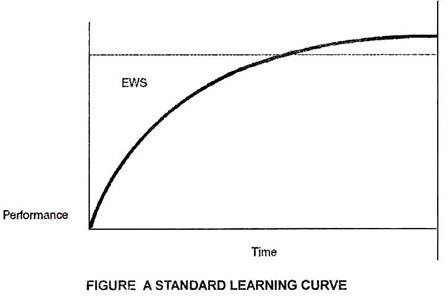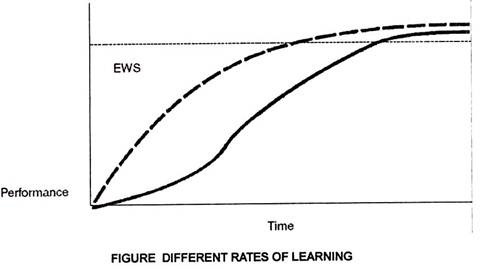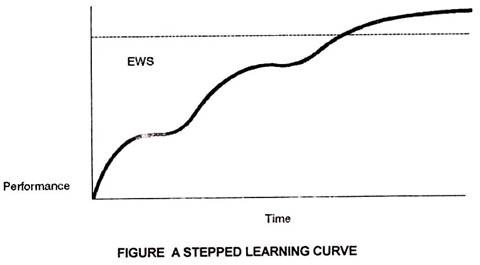Here is a compilation of essays on ‘Learning’ for class 11 and 12. Find paragraphs, long and short essays on ‘Learning’ especially written for school and college students.
Essay on Learning
Essay Contents:
- Essay on the Meaning and Aims of Learning
- Essay on the Theories of Learning
- Essay on the Process of Learning
- Essay on Motivation to Learn
- Essay on the Implications of Learning Theory and Concepts
Essay # 1. Meaning and Aims of Learning:
People learn all the time, and through doing so acquire knowledge, skills and insight. But they will learn more effectively if they ‘learn how to learn’. As defined by Honey (1998), the process of learning to learn is the acquisition of knowledge, skills and insights about the learning process itself.
In other words, learning is a cognitive process of acquiring skill or gaining knowledge.
Aims of Learning:
The aims, as described by Honey, are to:
(a) Provide a basis for organizing and planning learning;
(b) Pinpoint precisely what has been learnt and what to do better or differently as a consequence;
(c) Share what has been learnt with other people so that they benefit;
(d) Check on the quality of what has been learnt;
(e) Transfer what has been learnt and apply it in different circumstances;
(f) Improve the learning process itself so that how people learn, not just what people learn, is given constant attention.
Learning brings relatively permanent change in human behaviour that occurs as a result of experience. All complex behaviour is a learned behaviour. If we want to predict and explain behaviour, we must understand how people learn.
Learning involves change in behaviour. It is continuous process, which occurs all the time. We cannot see learning but we can see changed behaviour as a consequence of learning. Learning changes attitude of individuals to a large extent.
An individual reacts to any situation or responds to instructions in particular fashion, that fashion or style is caused due to learning. Theoretical approach to learning incorporates behaviourist, cognitive and newly emerging social learning theories. Understanding of these theories is important to the study of organizational behaviour.
Essay # 2. Theories of Learning:
i. Classical Conditioning – Behaviourist Theory:
Classical conditioning can be defined as a process in which a formerly neutral stimulus when paired with an unconditional stimulus, becomes a conditioned stimulus that illicit a conditioned response.
Ivan Pavlov a psychologist who won Nobel Prize introduced classical conditioning theory. The experiment envisaged dog as a subject. Pavlov carried out this experiment in three sequential stages. In stage one, he presented meat (unconditional stimulus) to the dog. He noticed a great deal of salivation (unconditional response). In stage two he only rang up the bell (neutral stimulus), the dog had no salivation.
In stage three, Pavlov was to accompany the offering of meat to the dog along with ringing up of bell. After doing this several times, Pavlov rang up only bell (without offering of meat to the dog). This time the dog salivated to the ringing up of bell alone. Pavlov concluded that the dog has become classically conditioned to salivate (response) to the sound of the bell (stimulus).
It will be seen that the learning can take place amongst animals based on stimulus – response (SR) connections. The study was undoubtedly single most famous study ever conducted in behavioural sciences. It was a major breakthrough and had a lasting impact on understanding of learning.
This stimulus:
Response connection (S-R) can be applied in management. Historically when a CEO visits an organization, production charts are updated, individuals put on a good dress, window panes are cleaned and floors are washed. What all one has to do is to just say that the Top Boss is visiting. You will find that all above work is undertaken (response) without any instructions.
Because the people in the organization have learned the behaviour (conditioned). It has caused a permanent change in the organization (S-R connections). Robbins states that classical condition is passive. Something happens and we react in a specific way. It is elicied in a response to specific, identifiable events. As such, it can explain simple reflective behaviours. But most behaviour – particularly the complex behaviour of individual organizations is emitted rather than elicited. It is voluntary rather than reflective.
ii. Operant Conditioning:
Operant conditioning deals with Response—Stimulus (R-S) connection. The concept was originated by B.F. Skinner. He felt that more complex behaviour couldn’t be explained by Classical Conditioning concept. He states that most human behaviour operates based on the environment. Operant Conditioning is concerned primarily with learning as a consequence of behaviour (R-S).
In Operant Conditioning particular response occurs as a consequence of many stimulus situations. Stimulus typically serves as a cue for a particular response. In his concept a “response” is first evaluated out of many stimulus, which is environmental in nature. Behaviour is a function of consequences.
It is voluntary in nature. Re-enforcement increases the probability of occurrence. Behaviour is learned and is not a matter of reflects. If we create learning consequences, the probability of specific forms of behaviour increases.
For example an individual will take a long trek (Response) to library because he knows he would be able to get a desired book (Stimulus), (R-S connections). Individual would work hard(R) because he knows that he would be able to get praise, or even promotion (S). Operant Conditioning has greater impact on learning as compared to Classical Conditioning.
iii. Cognitive Theory – Cognitive Approach:
Edward Tolman was recognized as pioneer of Cognitive Theory. The theory consists of relationship between environmental (cognitive) cues and expectations. He used white rat in his psychological experiment of Cognitive theory. He found that the rat could run through critical path with particular intention of getting food (goal/objective).
In the experiment, Tolman established certain choice points where expectations were established. The rat learned cognitive cues at various choice points, which would raise its expectation to move forward to the objective (food). Thus the rat turned to acquire food, based on relationship of Cues and Reward or expectations. This theory was later applied on human resources where incentives were related to higher performance.
iv. Social Learning – Behavioural Approach:
Social learning approach is a behavioural approach. The approach basically deals with learning process based on direct observation and the experience. It is achieved while interacting with individuals. In social learning people observe, alter and even construct a particular environment to fit in the social behavioural pattern.
Individuals learn a great deal from watching attractive models and they copy their behaviour and display the same. Children copy the behaviour of their parents, adults, and copy cinema actors/actresses in various styles. Social learning is practiced in organizations by observing various cultural, and social practices. This phenomenon is distinctly visible in defence services where cadets opt for a particular regiment based on the performance of then instructors (role model).
In industrial organizations leader must display a role model so that subordinates copy the style of functioning. An appropriate behaviour can be predicted that would contribute towards achieving higher individual satisfaction level and organizational goals. The influence of model is central to the theory of Social Learning.
Essay # 3. Process of Learning:
A number of leading authorities on learning in organizations have declared that ‘learning is complex and various, covering all sorts of things such as knowledge, skills, insights, beliefs, values, attitudes and habits’. Individuals learn for themselves and learn from other people. They learn as members of teams and by interaction with their managers, co-workers and people outside the organization.
People learn by doing and by instruction. The ways in which individuals learn differ, and the extent to which they learn depends largely on how well they are externally motivated or self-motivated.
The effectiveness of learning will be strongly influenced by the context in which it takes place. This includes the values of the organization. Is it truly believed that learning is important as a means of developing a high performance culture and achieving competitive advantage? Is this belief confirmed by actions that encourage and support learning?
Is the approach to learning delivery in line with the belief of Birchall and Lyons that ‘For effective learning to take place at the individual level it is essential to foster an environment where individuals are encouraged to take risks and experiment, where mistakes are tolerated, but where means exist for those involved to learn from their experiences’?
The Learning Curve:
The concept of the learning curve refers to the time it takes an inexperienced person to reach the required level of performance in a job or a task. This is sometimes called the experienced worker’s standard (ESW).
The standard learning curve is shown in the figure below:
But rates of learning vary, depending on the effectiveness of the learning process, the experience and natural aptitude of the learner, and the latter’s interest in learning. Both the time taken to reach the experienced worker’s standard and the variable speed with which learning takes place at different times affect the shape of the curve, as shown in Figure.
Learning is often stepped, with one or more plateaux while further progress is halted. This may be because learners cannot continually increase their skills or speeds of work and need a pause to consolidate what they have already learnt. The existence of steps such as those shown in Figure, can be used when planning skills training, to provide deliberate reinforcement periods when newly acquired skills are practiced in order to achieve the expected standards.
When a training module is being prepared which describes what has to be learnt and the training required to achieve the required levels of skill and speed, it is often desirable to proceed step by step, taking one task or part of a task at a time, reinforcing it and then progressively adding other parts, consolidating at each stage. This is called the progressive parts method of training.
Essay # 4. Motivation to Learn:
People will learn more effectively if they are motivated to learn. The motivation to learn can be defined as ‘those factors that energize and direct behavioural patterns organized around a learning goal’ comment, ‘The disposition and commitment of the learner – their motivation to learn – is one of the most critical factors affecting learning and training effectiveness. Under the right conditions, a strong disposition to learn, enhanced by solid experience and a positive attitude, can lead to exceptional performance.’
Two motivation theories are particularly relevant to learning. They are:
i. Expectancy Theory:
it states that goal-directed behaviour is driven by the expectation of achieving something the individual regards as desirable. If individuals feel that the outcome of learning is likely to benefit them, they will be more inclined to pursue it. When they find that their expectations have been fulfilled, their belief that learning is worthwhile will be reinforced.
ii. Goal Theory:
It states that motivation is higher when individuals aim to achieve specific goals, when these goals are accepted and, although difficult, are achievable, and when there is feedback on performance. Learning goals may be set for individuals (but to be effective as motivators they must be agreed), or individuals may set their own goals.
Essay # 5. Implications of Learning Theory and Concepts:
The practical implications of the learning theories and concepts described above are summarized in table given below:



